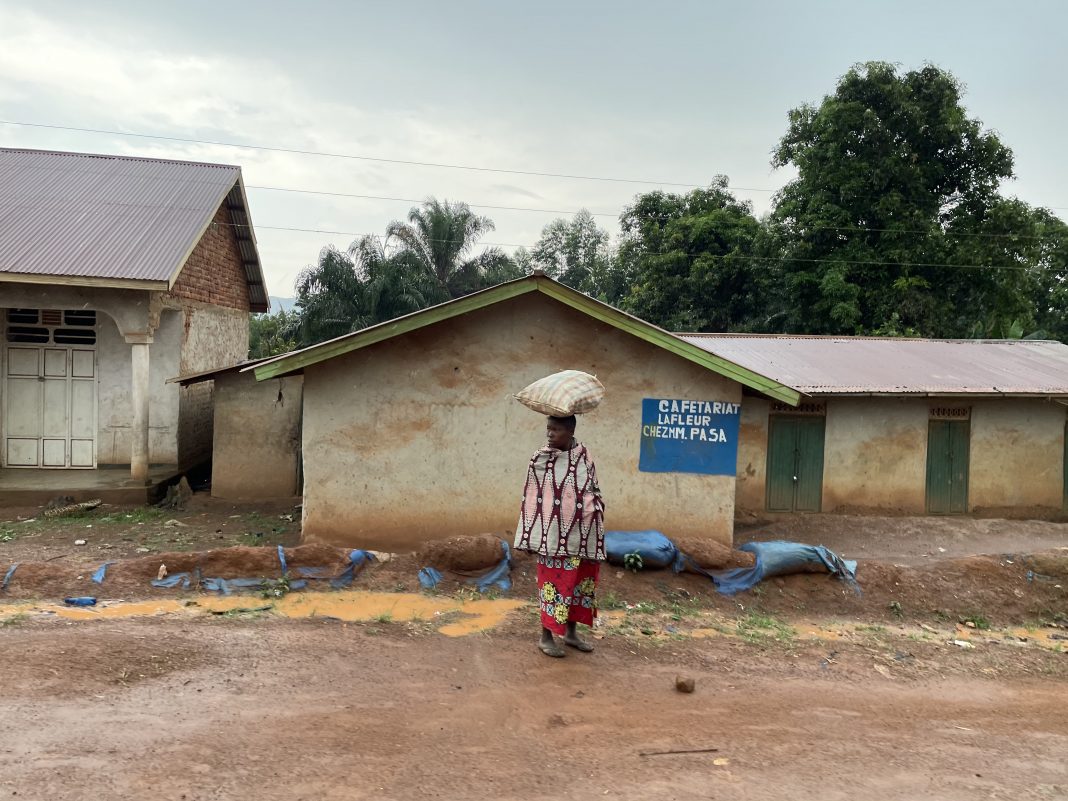It is a metallic sound, harmless. It lasts just over a second, but it can become as sharp as a machete blade or as devastating as the burst from an assault rifle. It is a beep, just the beep of a phone notification. A woman is on the ground, her belly open, her intestines exposed and her severed head resting on her arm. A pagne of colorful fabric still girds her hips. Where? Why? Then, a video. Do you hear those voices? It happened there, in that village. It was them who did it, it was them.
Forwarded many times, the message overwhelms anyone who has enough courage to look at it. However, here, in Ituri, in the East of the Democratic Republic of the Congo, looking at horror is not a choice. Even so, with just a beep, terror spreads. It grows at each sharing, like water swelling along muddy roads. An instant and it is everywhere, ready to be turned into hatred.
In the villages, as in Bunia, the provincial capital, everyone seems to know who those “them” are. Yet no “them” is ever equal to another in a war that is stubbornly narrated, at home and abroad, as the eternal struggle between Cain and Abel, between the Lendu and the Hema, a war between farmers and herders.
It is said to have started again with the death of a Catholic priest in December 2017—a mystery for many, like the mystery hiding the reasons and hands behind a conflict that is blood from an open wound. Ituri has forgotten peace. It remembers only fragile truces.
“We fled because our brothers made war on us,” says François. “The bandits, whom we always consider our brothers, always our brothers, came to us,” says Jean de Dieu. “We shared meals, and the same market,” Emmanuel recalls. They fled, joining the over 1.7 million internally displaced people in this province of just over 65,000 square kilometers in the Great Lakes region.
Michael Barongo Kiza doesn’t use the word Lendu. Sitting with his hands on his legs and wearing a large golden watch, which shines against his brown trousers, he lives in the IDP camp of Kigonze, on the outskirts of Bunia: “The problem is the CODECO who kill people. When I was the chief of Fataki, almost twenty-seven people were killed at the minor seminary, including a priest from Jeiba.”
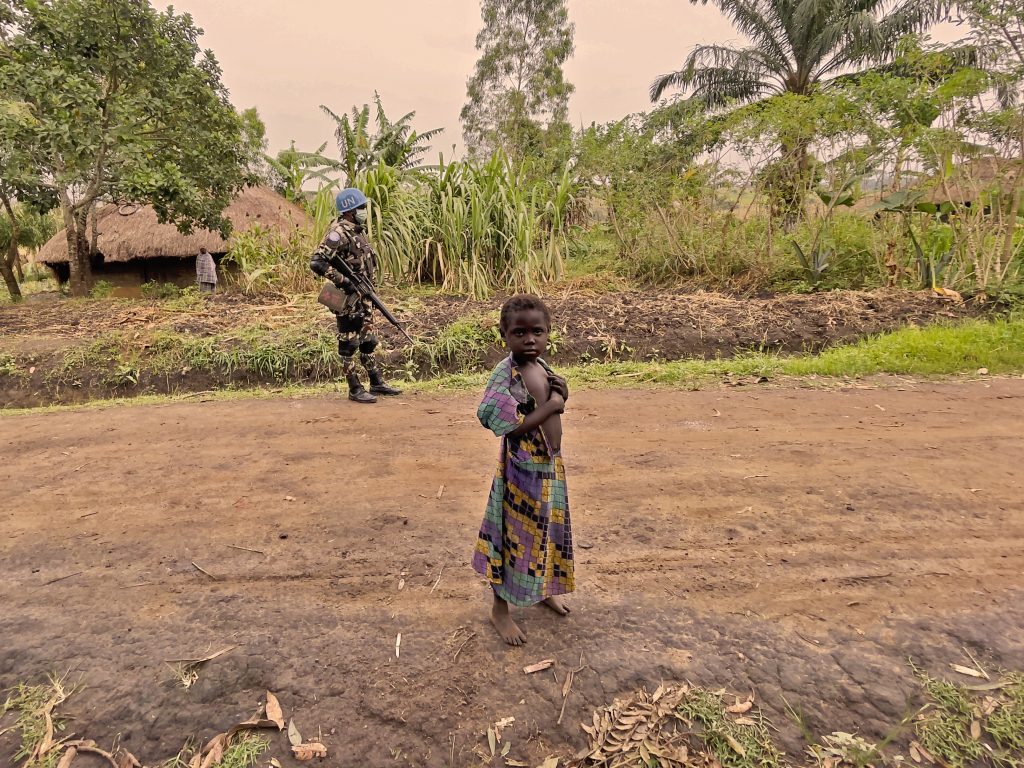
The Ituri war is one of armed groups, a guerrilla war. Irregular fighters, rebels, sometimes hidden in the forest, increasingly confused among their people. The CODECO, Cooperative for the Development of the Congo, is an association of militias founded in the 1970s and described as a sect where animist rituals and Christianity fade into each other. To the CODECO is ascribed most of the violence in the North, in the territories of Djugu and Mahagi. The majority of its militiamen belong to the Lendu ethnic group.
The ADF, the Allied Democratic Forces, an Islamist formation that is threatening North Kivu, began operating in the South, in Irumu. However, Irumu is the territory of the FPIC, the Patriotic force and integrationist of Congo. It is a group related to another tribe, the Bira, and its organization is still obscure. Its main target is the Hema community, which would constitute the majority of the fighters of Zaïre—a militia to which a limited number of attacks have been attributed. However, the geography of the conflict is much more complex: Mai Mai in the Mambasa area, factions, self-defense groups, dissidents of the FRPI (the Front for Patriotic Resistance in Ituri, which, in February 2020, concluded a peace agreement with the government), and many others. What they share is the strategy: targeting civilians.
That’s who “them” is—the perpetrators. That’s the easy narrative of violence generated from ethnic hatred. Yet, in the ISP camp of Bunia, Jean de Dieu Amani Paye looks out of his earthen house. He just knows that had to flee, suddenly. He farmed the land and taught at a school in a rural center, but he can’t say why it happened. “We lived well,” he says. “Someone you were with yesterday is now burning your house. It wasn’t easy. Searching for the cause was difficult for us. What prompted them to do so? We would like to ask them this question so that they can answer and we are reassured.”
Jean de Dieu’s question leads to a look into the eyes of a “many-headed monster,” as this war of multiple roots could be defined, according to Rehema Mussanzi, executive director of the Center for Conflict Resolution in Bunia. “If you go within the communities, communities will tell you different things depending on what has affected them most,” he explains. However, the roots lie in the wounds inflicted by an uninterrupted chain of conflicts.
Before the Congo became a possession of Leopold II, King of Belgium, in 1885, the tribes who migrated in Ituri had a history of clashes over land and resources that time had taught them to manage. It was the white colonizer, with his racist system, who laid the foundations for the hatred that would fuel future violence. It was said that there were superior and inferior races—races that would receive power and races for menial jobs; friends and enemies of Belgium. An “encyclopedia of the black races” crystallized the discrimination.
In 1998, the Second Congo War—the bloodiest contemporary war since the Second World War, with its more than five million deaths and the involvement of eight African countries—brought tension between ethnic groups to the boiling point. The following year, and up to 2003, it would have been a massacre. Then, there were new waves of acute violence until 2007. The victims of those conflicts are only estimates.
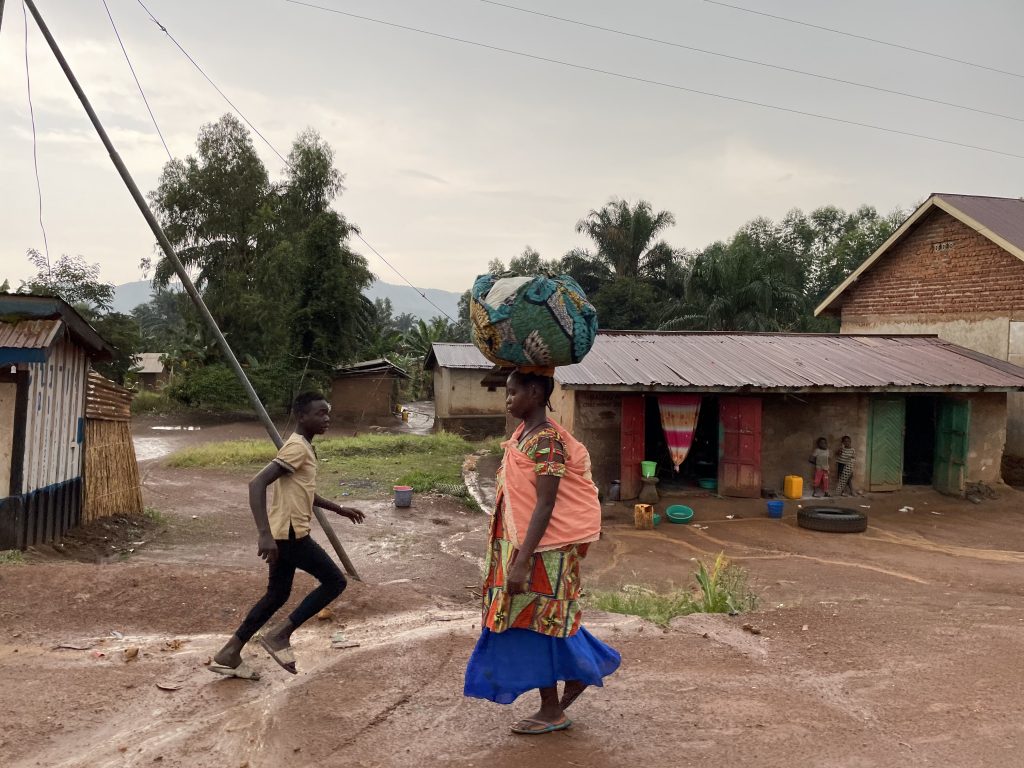
Even in the village of Sombuso, people died, and Emmanuel Kajole does not know why. “We lived very well with them. They suddenly came to attack us without us knowing what was the problem. … They kill us for no reason,” he says, sitting on a low stool, his hat on his head even though his shelter in the IDP camp of Kigonze is only half-lit.
A draped sheet separates the slightly raised mat from the corner, where the coal burns to cook the food. Emmanuel had a large house in Sombuso, with a living room and three bedrooms. He was a tailor and carpenter, but also the head of a small Hema community, traditionally herders. Seventy-six people raised goats, cows, and other animals, with someone fishing or trading. It was up to the elderly to ensure harmony between the generations. “Our ancestors ate sorghum and corn with meat. If you have a guest, you have to welcome him with meat, so kill an animal and offer him Malofu, a tea,” he says. “Life was too good before this war because the best meat in the region came from us,” he adds.
Traditionally farmers, instead, the Lendus. Today, however, shared lifestyles and intermarriages have caused one culture to fade into another to the point that, even more than in the past, what unites is now greater than what divides. Communities that in the North speak the same Central-Eastern Sudanese language, that have trod the same land for centuries, traded products, and lived with the same frugality that makes this region a place where everything is taken care of as if it were the most precious. A house, a field, or a road.
Joshua Marcus Mbitso has no doubts: “The world today talks of inter-ethnic conflict and that is what we have always rejected.” Joshua is the president of Lendu youth; he lives in Bunia, and the militiamen who perpetrate what the United Nations believes could be crimes against humanity belong mainly to his ethnic group, to his people. “We live together,” explains Joshua. “The Hema and Lendu chiefdoms are side by side, they are like leopard skin: a Lendu entity, then a Hema entity, and so on.”
Joshua talks about how it is easy to generate a fire. He tells of a young Lendu on his way to the market, stopped by the Congolese army at one of those “barriers” that can cost a headshot to those who do not pay. The soldier asks for 200 francs, but the young man has a 500 note—barely twenty cents of euro—and wants his 300 back. “There were young Hema at the barrier because it was in a Hema village. When the young Lendu claimed his 300 francs, he was mistreated by the soldier and the young Hema. They beat him … Do you understand what’s the problem?” he asks. Nobody was punished, Joshua says.
“(The war) began with individual problems. Some young people from our community and neighboring communities—I am talking about the Hema community—have had issues (with each other),” he explains. A trigger, like the death of Father Florent, a Lendu priest who died in circumstances never clarified, according to the Lendu community. The suspicion that he was murdered by a Hema member would have ignited violence. A war built on a chain of retaliation and the actions of armed groups with vague claims: “self-defense,” integration into the army, defense of the nation from “balkanization,” the protection of minerals.
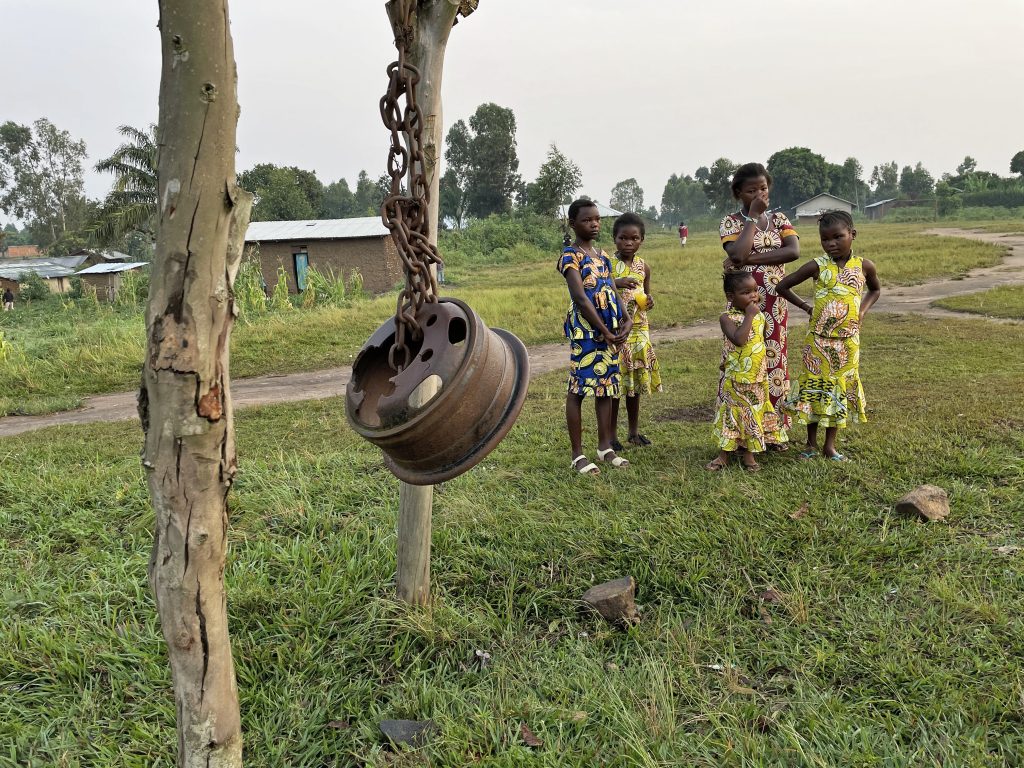
“We didn’t know they were planning a war. We lived with them in goodness. In just three days, we have seen changes: No one went to the fields or to the market.” François Mwanza Lwanga talks while his son, still a child, looks at him intently, with his legs curled up. His wife sits silently beside the empty dishes in the small house at the IDP camp where they have found shelter. The space is so small that clothes are hanging from the ceiling and every object can only be neatly stacked. François explains that in 1999, the same thing happened and so, when killings began, they fled. Seventeen died in his village. The ethnicity of the authors: again, Lendu. Yet, he, like Jean, Michael, Emmanuel, and Joshua, refuses to call it an ethnic war, even though the victims are for the most part Hema, to the point that the word “genocide” has been invoked.
“It is an international media campaign (aiming at saying that) in Ituripeople are being killed for ethnic reasons,” says David Mambo Kiza, a lawyer who defends the victims, almost all of Hema, but also Mbisa and Nyali. There is no war between rival groups, only a runaway community, killed by a militia that is a “well-organized mafia, a mafia of criminals.”
The Lendu, unlike the Hema, are not targets of such widespread violence, but they live a different form of suffering in a land where their name is the one given to the slaughters. Christian Ngabo Micho is a young Lendu and lives in a small town in the Djugu area, in the region from which the Hema flee while they remain, sometimes forced to move in search of help in other villages of their community. “It is very difficult to find community members in large sites for internally displaced persons … NGOs and humanitarian workers also find it difficult to understand that the Lendus are suffering … This is why they are confused, they fail to understand that (our) community is also a victim of this war … We are really suffering and the world should know,” he says.
Militias that bring death and devastation to the villages would not be an expression of the communities to which their members belong, as happened in the previous conflicts. However, they find shelter or impose silence in those communities. “The armed groups in some cases live within these communities even when the communities attempt to distance themselves from the armed groups,” explains Rehema. They are still their children, husbands, and youth, but first of all, they are armed. “Even communities and chief of villages, in Djugu in particular, have been targeted by some of these armed groups whenever they tried to advocate against the use of force to retaliate against the other community. In many cases communities are against them, but they have very small bargaining power to convince them otherwise,” he adds. “Often (the militias) say: “We are fighting (for our community) …. This is why we are taking arms. But do they have a mandate from the community to do it? No,” says Josiah Obat, head of the Monusco of Bunia, the UN peacekeepers who have been in Ituri since the early 2000s.
The word that would explain a conflict of an ethnic nature that, however, is not ethnic, is the one that is on everyone’s lips, the one that stirs up the anger of those who do not hold a Kalashnikov or brandish a knife: “manipulation.” Those who want chaos would blow on the burning embers of ancient tribal grudges, fueled by recent wars and the memory of a colonial past that would have rewarded one tribe with spaces of power to the detriment of another—the Lendus. “If the conflict were ethnic, we would not have had to live with them since the wars of 1999,” explains François, who fled with his family, abandoning his village where he was a pharmacist and cultivated a small patch of land. “We ask ourselves whether behind these conflicts there are string-pullers who hide to create conflicts”, says Jean.
It is a genocide armed by “black hands,” internal and foreign. Wilson Mugara Komwiso, provincial deputy elected in Irumu and a notable Hema who works with the youth of his community, wants his message to reach the world. His is a cry: The narrative of the ethnic war would move the attention from the deep reasons for the violence and from finding those “black hands” that use the ancient hatred to incite fighting.
People know the Roman adage “divide et impera,” but here it becomes “divide and extract.” In Bunia, shops facing asphalt-free streets sell all kinds of goods, mostly cheap plastic, imported from China. They arrive along the road that leads to Uganda, the dirt road where trucks raise dense dust and challenge the insecurity of the region to supply a city that is an expanding bubble—the bubble of a war economy. From that street, where rickety and loaded scooters whiz by and women let colored fabrics sway over their bodies, gold reaches international markets, passing through the Emirates. “There are people who may not want the conflict to end because they are profiting from it. They are using their capability to have ammunition to exploit mineral resources.” This is from Joseph Obaith, at the head of the blue helmets.
Leaning against the entrance of one of those shops, three men wait. They lead the way to a small bare office in the back. There is little or nothing on the walls, a plastic tablecloth with geometric designs on a table, chairs also made of colored plastic. And a scale. The deal is silence; don’t even register a sigh. “Gold is brought to us from artisanal mines, small quantities at a time, always the same people,” says one of the three. Sitting down, he takes a plastic bag out of his wallet, inside crumbs of what lives under the thin crust of Ituri. No one speaks. They almost seem to hold their breaths while the camera shoots two suspended saucers with a few coins and a little gold. Suddenly, for no apparent reason, the men ask to clear the room.
You need a license to sell gold, but it is often a façade. A little of its trade goes to the state, and much more ends up in the pockets of a few. Buying it without a trace is now a habit. In 2019, Ituri and North and South Kivu declared just over 60 kg of artisanal gold production. The United Nations estimates that 1.1 tons were smuggled, in Ituri alone. “It is quite easy for gold to illicitly … leave the country into Uganda or into Sud Sudan, or going south into North Kivu and taking the road to Rwanda,” explains Rehema.
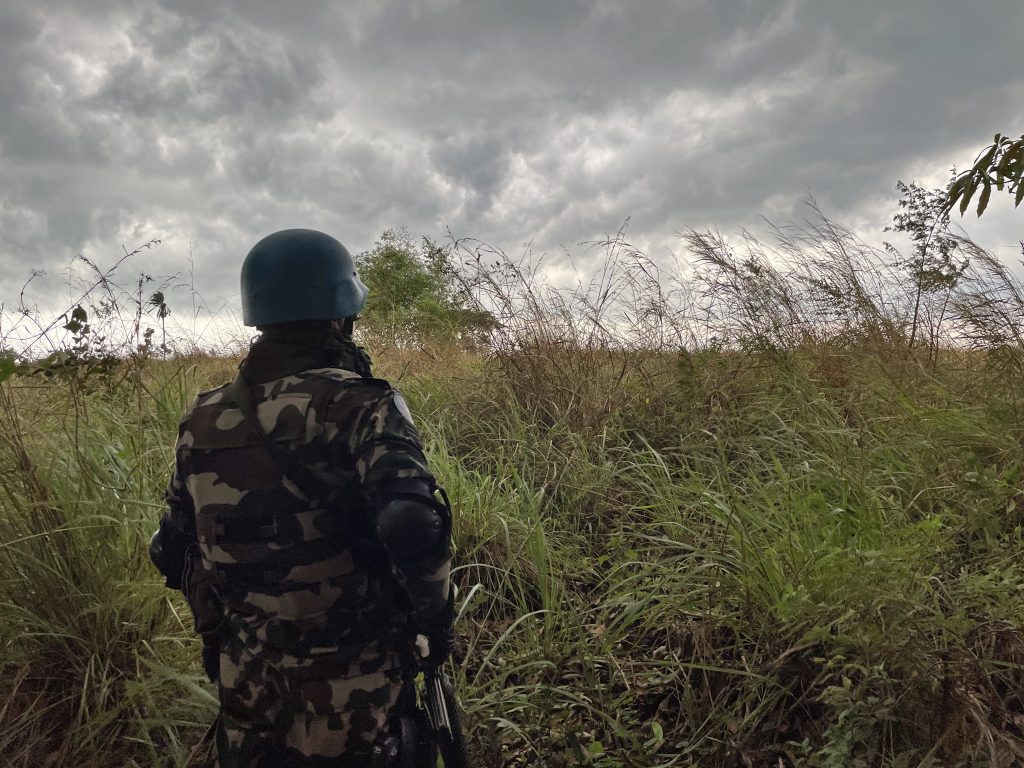
This is a country where everyone digs if they can and where borders have always remained only pencil drawings on a map. That pencil has never been able to draw the right boundaries even inside, on that land under which gold never seems to run out, and which Hema and Lendu must take care of to produce meat, cheese, fruit, and cereals. It is the same land that the Belgian colonizers divided and distributed among the ethnic groups in a semi-feudal system that after independence changed the actors, but remained the same. Even for those boundaries and for their control, Ituri dies: “To my knowledge, there is no formal land registry for customary land. It is just known that the boundaries of certain collectivities are here, but formally it is really difficult to find a piece of paper that clarifies that this is land belonging to such and such tribe. Actually, it is just historical because those tribes settled on those lands,” explains Rehema.
That is the same land that Bile Luchobe cultivated. Surprised by the war, she fled to Bunia, too. “We lived in peace and security. The CODECO members knew us very well. We do not know where they got the thought of killing us.” The blue mask is lowered on her chin and she has a handkerchief on her head, as do almost all the women here, like those who return home along the road that runs to Uganda. She wears a necklace framed by the ruffles of a pink and yellow dress. “We lived in peace with our brothers. We even went to the market with them without any problems and now they are starting to kill us with machetes and guns.”
She sits in a crowded hangar with other women and children at the IDP camp. She waits to go back home. “I can’t live with them anymore. I can’t live with people who kill like that. But after the war, in peace, we will live together.” Bile is sure of that. Still, however, it is a beep that turns pain into terror and spreads a hatred fed by hunger and misery. These, too, are the heads of the monster that arms men and snatches childhood from children, leads them to pick up rifles and set houses on fire when killing seems the only way to live.
THE FORGOTTEN WAR OF ITURI
Fleeing war, weaving life in IDP camps of Bunia
Between horror and hope in the villages of Ituri
“Don’t call it ethnic. Ituri confict is a mystery”
Credits: Elena L. Pasquini
Production and swhaili translation: Akilimali Saleh Chomachoma


